Content from the Brookings Institution India Center is now archived. After seven years of an impactful partnership, as of September 11, 2020, Brookings India is now the Centre for Social and Economic Progress, an independent public policy institution based in India.
The following is an edited transcript of the podcast, States of Anarchy, Episode 46: The Road from India to Nepal. It has been generated by human transcribers and may contain errors. Please check the corresponding audio.
Regional connectivity in South Asia faces challenges that are unique to the region. According to a recent Policy Brief under our regional connectivity initiative, Sambandh, South Asia is arguably the least connected region in the world. Nepal is unique owing to various factors ranging from its terrain, its strategic location as the common neighbour of powers like China and India, as well as its own interests, economy and bureaucratic constraints. In order to understand the caveats to regional connectivity between India and Nepal better, and assess the state of infrastructure projects between the two countries, as well as the obstacles that their progress faces, Research Associate Riya Sinha recently embarked on a field trip to Nepal. In a new episode of the podcast, States of Anarchy, she discusses her findings and insights with Hamsini Hariharan.
Edited excerpts from the podcast:
Hamsini: Did you know that it’s cheaper for some countries in South Asia to trade with Brazil rather than with each other? It’s true! Connectivity in South Asia is often held ransom to infrastructure and bureaucratic inefficiency and border issues. Let’s take the example of Nepal. Nepal receives a huge bulk of India’s developmental aid and much of it is devoted to connectivity like roads, railways, and even air links. Connectivity is very important because Nepal is a mountainous landlocked country and the relations between Nepal and India have been fraught with complications over the last couple of years. So, what has the Indian government done in Nepal? What are the nuts and bolts of infrastructure projects in South Asia? How does local bureaucracy affect larger projects in connectivity? My guest for today was recently on a field trip to Nepal. Riya Sinha is a Research Associate with Brookings India, she works on regional integration in South Asia particularly in the areas of trade, investment, and building supply chains. We caught up on connectivity between India and Nepal and spoke about her recent trip to the postal road which cuts across the Terai region in Nepal.
Hamsini: Hi Riya, Welcome to the states of Anarchy, thank you for joining me.
Riya: Thank you for having me here, Hamsini.
Hamsini: So, when we think about India and Nepal relations, since independence there have been a lot of issues concerning the goodness of people to people relations, but also those involving friction over infrastructure projects. On a very broad level, how do you think relations between India and Nepal have evolved since independence?
Riya: Well, in South Asia particularly, India and Nepal share a very unique relationship. If I had to specify the major contours of the relationship, I would bring it down to four points. First, it is guided by treaties, mainly cemented by the Indo-Nepal peace and friendship treaty of 1950. After this would be trade and transit, because 98% of Nepal’s transit trade takes place through India and 65% of Nepal’s total trade is with India. So, there is a lot of dependency. The third thing is people-to-people connectivity that comes from geographic and cultural ties. I was mentioning to you before that we have a lot of Nepali students who study in India. During my recent field trip to Nepal, we noticed a lot of migration patterns between the plains of Nepal and the Northern areas of India. Apart from that, there’s a lot of labor migration from Nepal to India and some from India to Nepal, but the latter figures aren’t as much as from Nepal to India. The last thing that guides the relationship is development co-operation. Nepal is, in some years second and some third, highest recipient of development co-operation from India. In 2018-19, it was more than a thousand crores. While these four factors essentially describe the relationship between India and Nepal, they are also the points of issues.
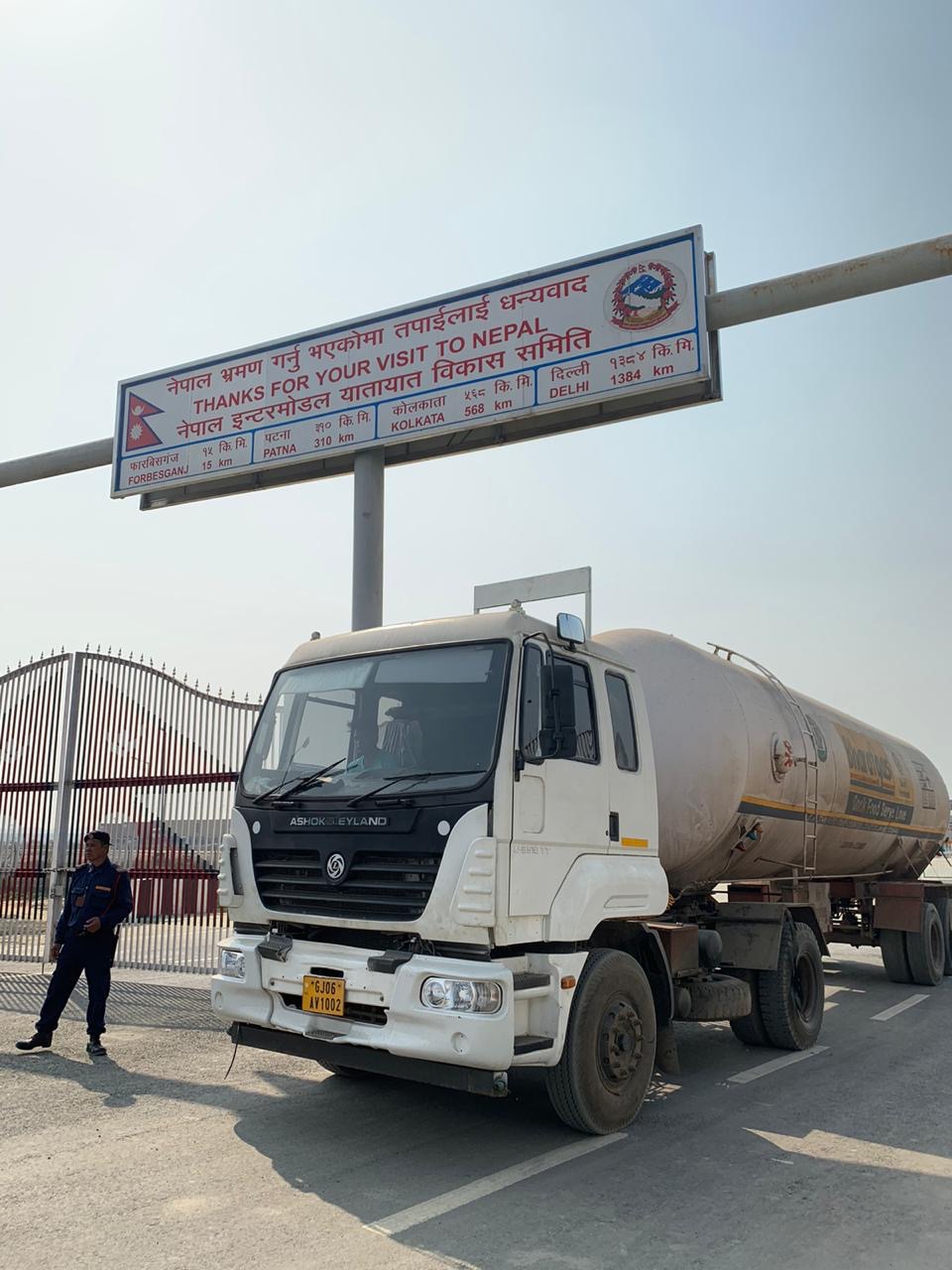
Hamsini: Yeah, like with the Indo-Nepal Friendship Treaty that has brought a lot of friction.
Riya: Yes, there have been frictions over the same. They (the governments) established the eminent person group in 2016 because they wanted revision of treaties, and not only the Indo-Nepal friendship Treaty but others as well. Nepal is looking for another route to transit from India and fairly so because transit from Nepal’s cargo from Indian ports of Kolkata takes about 20 days, which adds to the logistics cost for Nepal, it makes goods much more expensive in Nepal than what they should be. The geographic proximity also brings security concerns, we have a porous border with Nepal which may be used for illicit activities, anti-India activities and might turn out to raise security issues, especially concerning China. The factors that bind India and Nepal are also matters of concern and that makes the whole relationship very unique.
Hamsini: Since the 1990s, when the famous Gujral Doctrine came in, the relations have taken an upturn, or would you say that you can’t just characterise relations as good or bad? How would you characterise relations in the last 20 years?
Riya: There have been good instances as well as bad. In certain aspects, the relationship needs more work from both the Nepali government and New Delhi. In the last 10 years, if I have to specify, 2006 was one of the most favorable years for India-Nepal relationship. We were signing a lot of agreements, engaging in development projects, but after that, particularly in 2015, after the earthquake and the blockade imposed, there was a period where Indo-Nepal relations faced downturn and that has not worked in the favour of India, so far.
Hamsini: India also does this with the neighbourhood, where with any country, the idea of China playing an influential role has also become something that India is worried about and this is true for Nepal. As you said earlier, Nepal wants alternatives for sea-ports as it is much more expensive for them to send air cargo and other stuff through Indian ports. So, it’s very natural that they are looking for alternatives and China can provide those alternatives, but do you think that this is the reason for the relationship to come to the fore?
Riya: Any sovereign country would not like interference from any other country no matter how good the bi-lateral relations are. Nepal is looking for options so that it is not completely dependent on one country i.e. India. Looking for transit ports via China, while at the macro-level might sound really good, but at the micro-level, it’s difficult to implement, because it is going to be a very expensive process which is not economically feasible for Nepal, to develop that kind of transition point from Tibet and to the seaports in China. It is much cheaper and much more efficient for Nepal to access Indian ports. That said, because the option exists, the Indian government needs to give more push to reforming and paying heed to Nepal’s concerns for infrastructural development and reduction of logistics cost as these are the major areas of concern.
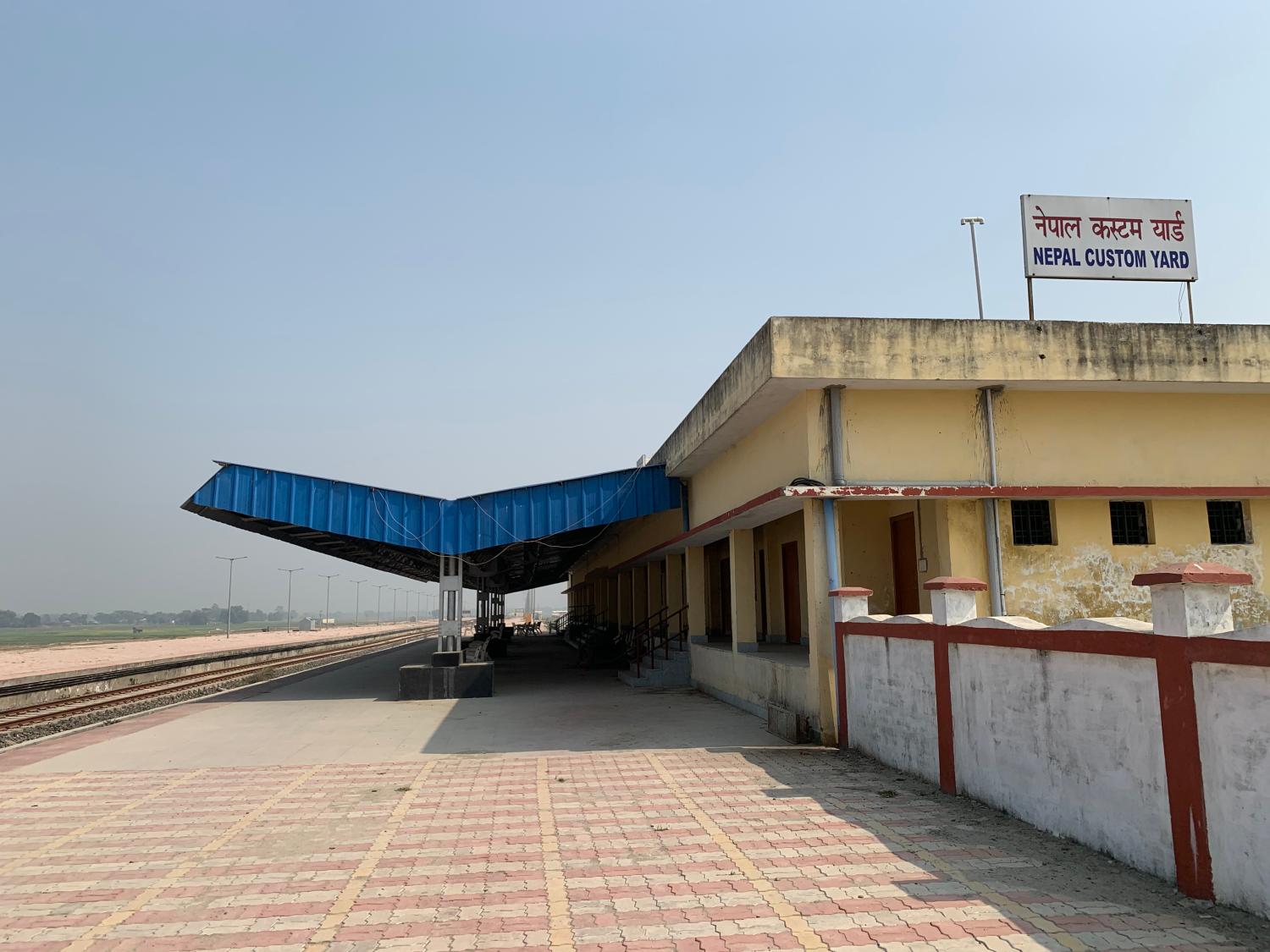
Hamsini: Let’s understand the China aspect a little later, but as you majorly work on connectivity, I remember reading your report, which highlighted that South Asia is possibly one of the least connected regions all over the world and that connectivity has declined since colonial times rather than increased. Do you agree with this statement or do you think there is more to it?
Riya: We can’t quantify it in the same manner as in those times as the volume of goods and services was much lesser and the connectivity was more, relatively. But now, we have more access, more treaties in place and agreements to facilitate connectivity. In those terms, it is not enough what we are doing right now. How is it that we haven’t been able to achieve our potential? There are two reasons for it. First, despite SAARC (South Asian Association of Regional Cooperation), the whole integration process has been marred by Indo-Pak relations. SAARC hasn’t been able to move forward and has been unable to deliver because of that. Secondly, there has been an inherent political mistrust between the different South Asian countries, and after 2014, there have been attempts to address that at some levels but various instances between Indo-Pak, SAARC summits being cancelled, India-Nepal blockade; the distrust is coming back again and what is working right now is bilateral and sub-regional mechanisms rather than a regional cooperation mechanism that existed.
Hamsini: Okay, so when we say “connectivity” we are talking about roads, railways, and sea-ports. Is there something more to “connectivity” or are these the major infrastructure avenues?
Riya: Oh no! There is much more to connectivity. Many scholars segregate it into hard and soft connectivity indicators. While you have something like trade, investment, and infrastructure these have to be complemented with the softer connectivity indicators i.e. people to people connectivity, visa relaxations; we don’t have a liberal South Asia Visa regime. We have the largest visa office in Dhaka, but why do we need a Visa office in the first place? Why can’t the travel and connectivity be the same as in ASEAN (Association of South East Asian Nations) or EU (European Union)?
Hamsini: That is completely fair, whenever I travel to South East Asia, I look at the separate ASEAN queue and whenever I travel around in South Asia, you still have to go through the same bureaucratic procedure that you would have to go elsewhere and you would think that we’ve come further now. You would think that relations would be better to facilitate that.
Riya: Relations are getting better but only at the bilateral level. India-Bangladesh relaxed the VISA regime in 2013, India-Maldives did the same in 2017, so it’s happening at the bilateral level but not at the regional level, as it should have. We talk about trade, and one of the recommendations that most of the reports quote are, the lack of people to people connectivity. But, what does it entail and how is it developed? It is developed through the exchange of students, promotion of tourism and various other softer factors.
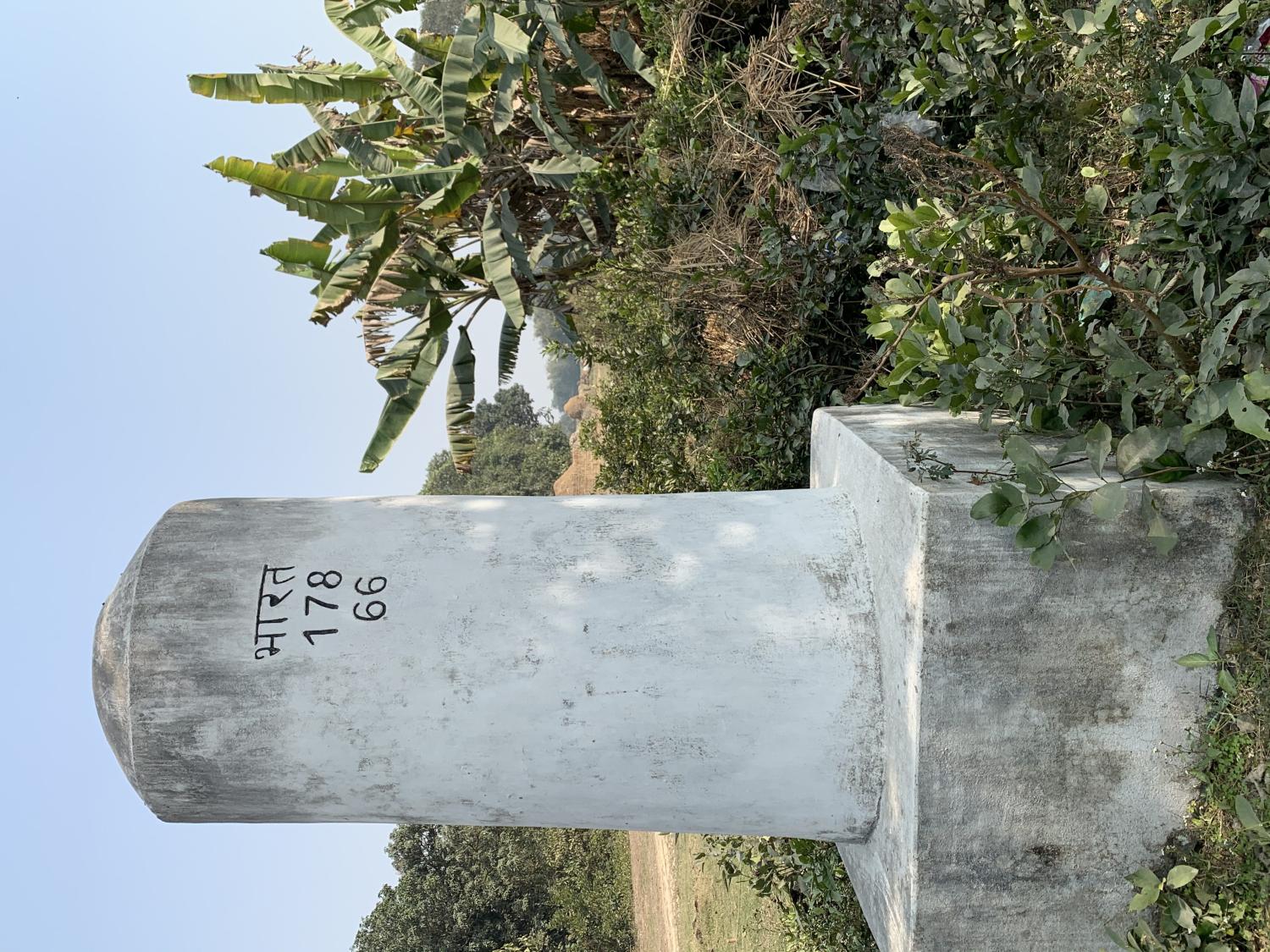
Hamsini: As you said earlier, since 2014 there has been a conscious attempt to reach out to our neighbors, such as in PM Modi’s swearing-in ceremony, where all the heads of the state of SAARC countries were invited. But again those multi-lateral arrangements have always been at the behest of Indo-Pak relations in South Asia. Do you think the way forward would be only to look at the bilateral or sub-regional initiatives and that is the pattern which is here to stay?
Riya: It’s a pattern that should be encouraged. Dr. S. Jaishankar (Foreign Minister of India) recently stated, “SAARC or any other medium” and any other medium implies if SAARC is not working, other connectivity arrangements can also be tried, such as BBIN, BIMSTEC, etc. but let’s keep moving forward.
Hamsini: Yes, before you go, we were talking about this earlier, before we began this podcast, we said that IR sounds very fancy on paper and podcast. However, when you go to the field, the situation could be vastly different from what you imagine it to be. So you’ve been traveling for 1-2 years, particularly to Nepal, what are some of your first impressions from when you went to Nepal to see the state of connectivity?
Riya: That’s tough to put together because Nepal is a country in transition. So, when you travel to Kathmandu, you see one type of infrastructural development project and then suddenly you are in the Madhes region – the Terai region – which is vastly different, and it’s visible that there is a need for infrastructural development in terms of the roads, rail, and airports, even within Nepal. Presently, they do have air services connecting to the smaller provinces, but the airports are in bad condition and they require infrastructural upgrade. India can make a more consistent effort in providing the needful to Nepal, rather than having a reactionary approach. For instance, if China announces in the future or as it has in the past, to have a rail project to Kathmandu, then India ended up announcing a rail project from Raxaul to Kathmandu, which was a reactionary approach. India should take a lead in the infrastructural development in Nepal in line with its capacity to develop.
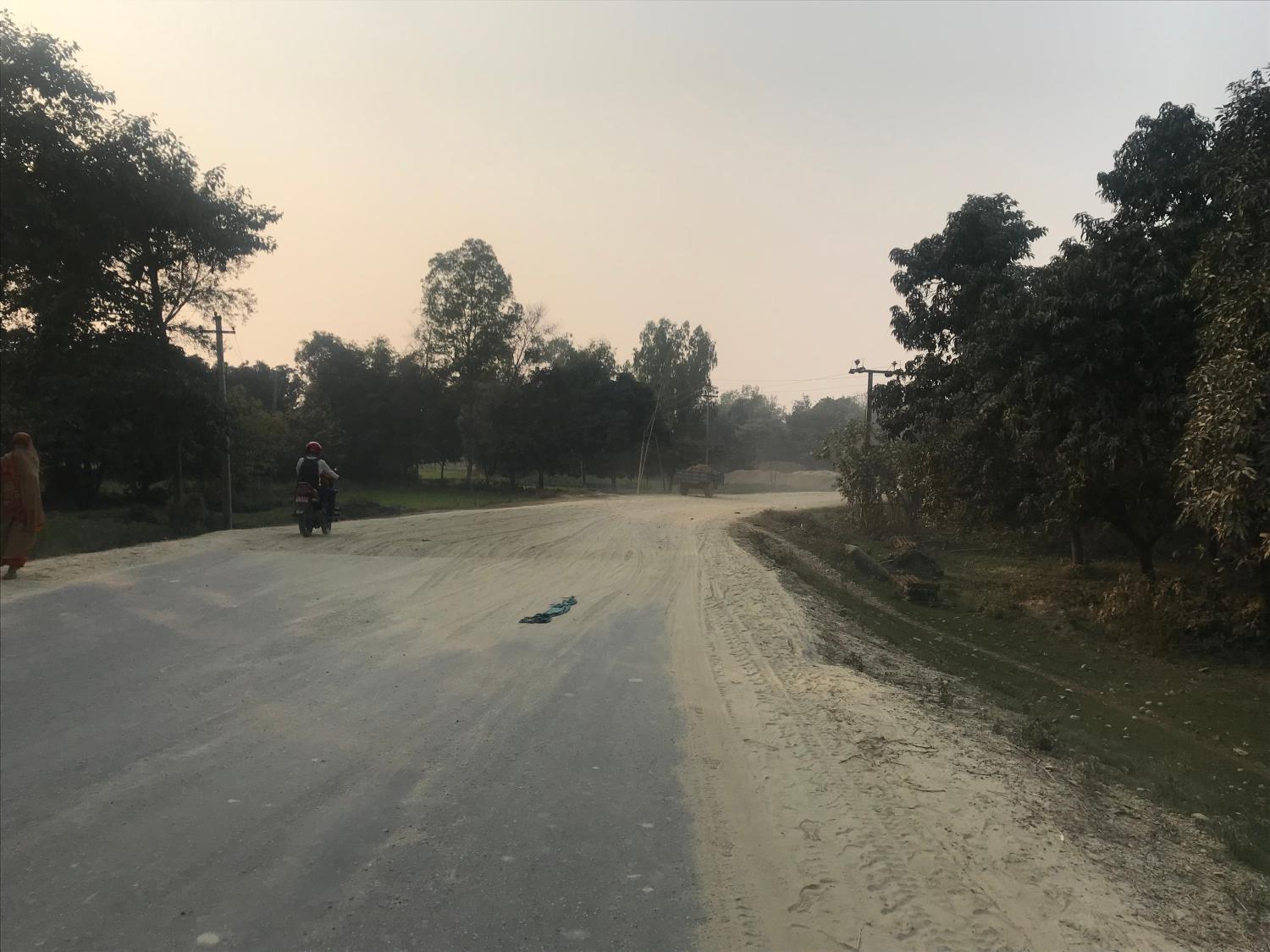
Hamsini: What exactly are the connectivity projects that India’s been working on in Nepal?
Riya: So, India has been working majorly on infrastructural projects in Nepal. It is involved in the development of ICPs (Integrated Check Posts), these are the freight and passenger transfer points between India and Nepal. Currently, there are four ICPs in India and Nepal, these are Raxaul-Birgunj, Jogbani-Biratnagar, Sunauli and RupaiDiha, roads and railways. The border roads are being developed by the Ministry of External Affairs, some of it is being developed by departments of roads in Nepal with an MOU with India. Apart from this, there are rail projects, there is the Jogbani-Biratnagar rail extension project right now, Janakpur-Jayanagar, Bardiwas rail project is under development and almost near completion. The Raxaul- Birganj-Kathmandu railway link is in the pipeline as is the extension of the Raxaul-Birganj railway link to Kathmandu. Very recently, one of the largest hydropower projects i.e. Arun-3. India and Nepal have completed the financial closure of the project. India is going to fund 70% of the cost of the project.
Hamsini: So, these are the whole host of projects excluding the ones India has worked on in the past?
Riya: Yes, some are the extension of the past projects and some are new. India does a variety of projects under the umbrella of small development projects concerning schools and ambulances in Nepal.
Hamsini: When you look at the whole ambit of projects that India does, Indian capacity, as we know to carry out a lot of infrastructural projects is limited in the sense, so how would you say that these projects have been carried out in Nepal and what were the roadblocks that they’ve faced, if they’ve faced any or what problems did they run into?
Riya: It’s a very unique case of infrastructural projects that I have noticed in my last visit to Nepal. The hydropower projects have been completed without any major issue whereas road projects, such as the postal road, hasn’t been completed in the last 15 years. The postal road runs across the Terai region of Nepal from east to west, and India is developing approximately 300 km of the total road, and the rest of three hundred is being developed by Nepal. This has been under development since 2006. This case study is a specific example of how development projects should be conducted in the neighboring countries, as any project should start with the preparation of the detailed project report, in this case when the MoU (Memorandum of Understanding) was signed between the Government of India and the Government of Nepal. A public sector company called RITES had conducted the Detailed Project Report (DPR). From (the date of) RITES conducting the DPR and being appointed as the consultant for the whole project, the ground level reports say that only 10 % of the project has been completed in the next two years because of the issues in the DPR and after that, the DPR was revised and was given to a Nepali consultant. Following which the Nepali consultant prepared the DPR, the third one was prepared by a body called NHIDCL which is under the Ministry of Road and Highways, Government of India. From making three DPRs to not being able to implement the projects, there has been a lot that is lacking from the Indian side as well on how technical projects should be conducted in a sensitive area.
Hamsini: Why were the three DPRs needed? What was the problem with the first two?
Riya: The problem was that it was conducted by an Indian consultant who did not understand Nepal as well as a Nepali consultant would. So, you have a group of researchers going from India and conducting a feasibility study, preparing a report and giving it back. So, there were some alignments which were not correct for the road, as a result, no progress could be made on that particular road for the next two years. Only 10% was completed i.e. out of 300km they were able to make only 30km in the first two years. The second DPR is still being referred to by the NHIDCL but they are also conducting their own DPR in certain stretches where the second DPR is not reliable, as whenever they have to re-align the road, it’s essential to prepare a separate DPR. So, the projects lack implementation due to neglect in conducting a proper DPR, it shows what is lacking in the approach. Ideally, the DPR should have been prepared by Indian and Nepali consultants in a joint venture. That could have saved time, could have the right alignment in place, and avoided a lot of other issues that came up relating to alignment, land acquisition, and the discontent in the local population. Because, if alignment A was given in the first part, then why is alignment B given in the second part? It is very interesting to note that every time an Indian project is announced in Nepal the rate of land escalates adjacent to the site of the project. So, in this case, when alignment A was selected, the rate of land escalated near alignment A. As a result, the locals who had to give up their land, started demanding higher compensation. When alignment B was chosen, there was discontent amongst the people residing adjacent to alignment A, as they had already escalated the cost and had made preparations and decisions without getting remunerations for the same. So, there was a lot of local resistance due to which the project got delayed.
Hamsini: Whenever a project gets announced, what are the series of steps that it goes through? So, you first have the MoU that is signed followed by DPR conducted either by the government or external consultant and later it goes for construction. Are there are any other steps that it goes through?
Riya: Yes, there is a tendering process after that, where you invite tenders from the local contractors for the construction of the project. For example, in the case of a postal road project after 2016, it was decided that both Indian and Nepali contractors would construct the project in a joint venture. So, most of the stretches of the roads are being constructed by both Indian and Nepali contractors in collaboration.
Hamsini: What is the present status of the postal road project that has taken fifteen years to complete?
Riya: Current situation can be explained by first categorising the small packages that the road has been divided into which equates to 14. The road is divided into the packages for development purposes between different stretches, for instance, one can be 17km whereas the other can be 20km. This is how the packages are divided. Out of 14, four have been completed. Two cannot be completed due to issues such as alignment, land acquisition, and the road passing over a canal, which cannot be fixed. This is again a loophole in the DPR because there was no early projection of the same and this is one of the significant causes of further delay. The other 8, are in progress and should be completed by May, this year. Hopefully!
Hamsini: Do you think that it has gotten impetus over the last couple of years or has connectivity and construction always been this slow for Indian projects?
Riya: As I’ve mentioned before, some of the projects have been completed in time and some have been slow. With this particular road, for instance, there were a lot of political implications because the postal highway is very close to the Indian border. Even within Kathmandu, there was reluctance in developing this road, or giving priority to road development as I’ve mentioned there were issues related to land acquisition. Land acquisition is not unique only to this project but has played a key role in causing a delay in other projects as well. During our recent field trip, we noticed that there was ADB (Asian Development Bank) funded road project and there were certain electric poles that were part of the road that they had to clear out, which requires coordination between the department of roads in Nepal, and the electricity department in Nepal. The Department of Roads asked their contractors to remove the electric poles and put it on another side and any fee that was due, they paid to the electricity department, so the latter would not have to issue separate tenders and hire contractors, which would be a longer process. The same procedure was not adopted for the postal road, and when we went along the postal roads, electric poles were there in the middle of the road, and every authority that we had met in Kathmandu or in the provinces had said the electricity department is not cooperating. So, there is a selective approach to some Indian projects and some multi-lateral funded projects. This is where there needs to be more trust-building between both Governments of India and Nepal in terms of the completion of the project, because again there is a cost factor that is involved. If the initial cost of construction was 800 crores (Nepalese Rupees), due to the delays, the cost has been escalated by a 100 crores (Nepalese Rupees).
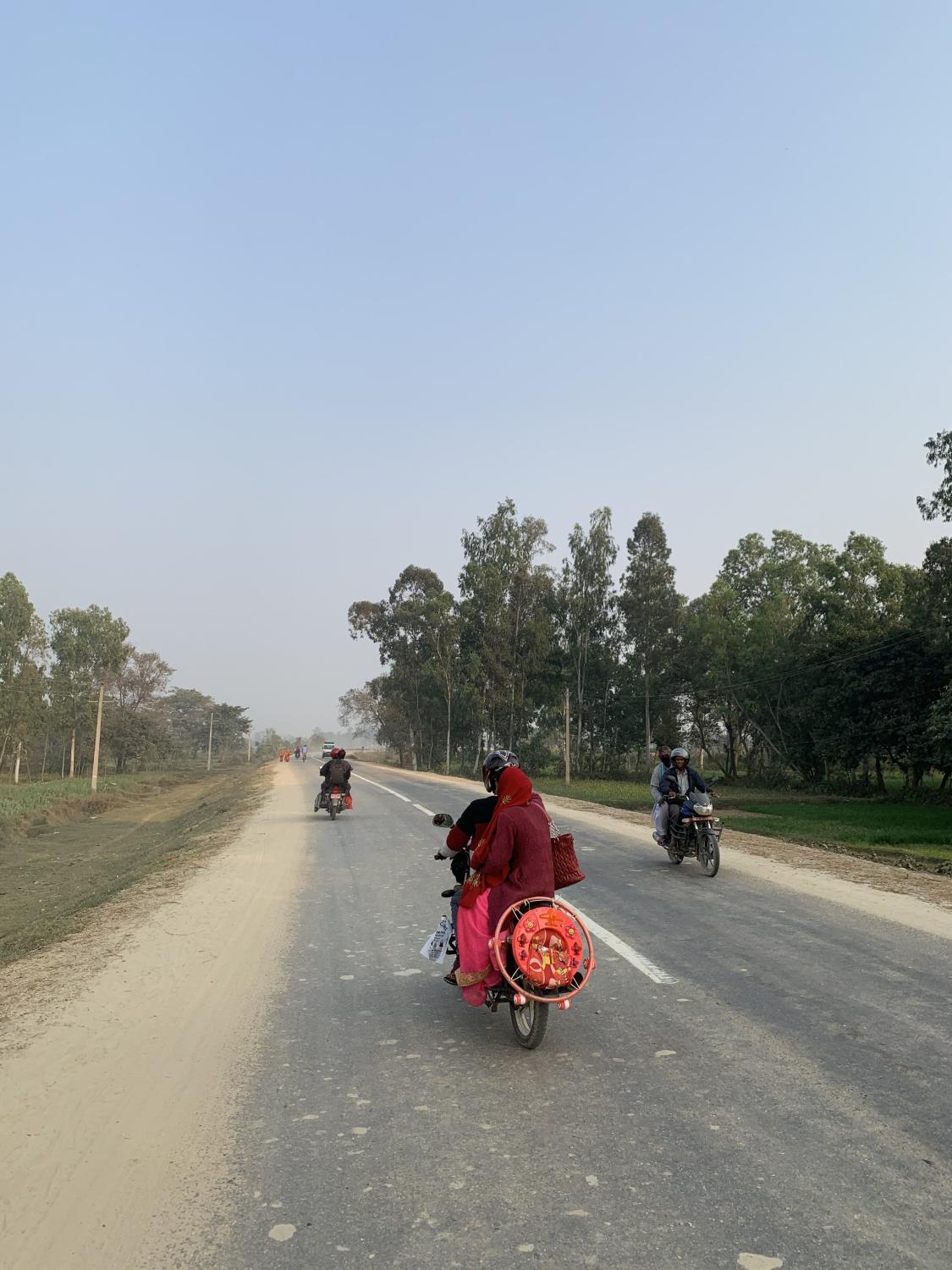
Hamsini: It’s interesting to note the bureaucratic wrangling between the two Nepali stakeholders and how at the end of the day the outcome of that is, India appears to be unable to go through with projects. Because what are the Indian factors in it, right? They could have put pressure on the Ministry but it wouldn’t be able to work with all the stakeholders because, at the end of the day, it is a domestic issue between the two Nepali bureaucratic agencies. Land acquisition is not a problem that is particular to Nepal and is common to South Asia. But how do you work with land acquisition for a foreign-funded project, in this case, with India? Who is in charge of figuring out the land acquisition process?
Riya: In the MoU, it was specified that 90% of the land should be available before the start of construction. The Government of Nepal is responsible for land acquisition and payment of any compensation to the project affected families. That’s the case across the board. Project implementer is not responsible for the payment of compensation whereas it is the beneficiary government’s responsibility to give land for the particular project. This is where some of the Indian projects have faced issues, such as the postal road project. However, there is also the Jogbani-Biratnagar Integrated Check Post that was completed, and during my visit, two weeks ago, I noticed that while the check-post was not as big as the other ICPs across South Asia, the authorities had additional land adjacent to the check post to keep a scope for expansion. This highlights that the project was carried out in a planned manner and reflects the interest of the government to develop that ICP because there were a lot of petroleum products that pass through the ICPs and that is one of the major imports of Nepal from India. It was beneficial in that sense. The same attitude needs to be translated to other projects, specifically to the postal road project.
Hamsini: How have Chinese infrastructure projects, particularly in Nepal worked, as we talk about alternatives, how have those projects worked?
Riya: Frankly, I haven’t come across Chinese infrastructure projects in Nepal yet, that have been completed. There have been talks of developing hydropower projects so that they have alternatives and they don’t have to completely depend on India. Similarly, for this Lhasa-Kathmandu rail project, but I haven’t come across any implemented project between China and Nepal. The case is that even when China states that it wants to develop infrastructural projects in Nepal, it wants Nepal to be the gateway to South Asia. We need to think what will China gain from building a project in Nepal, other than transit the goods? Nepal is a very small market for China. For China, giving a grant of billions of rupees to develop a rail link all across the mountains, building tunnels, breaking mountains to reach Kathmandu is more expensive and it doesn’t have a good return on investment. We have to look at it from that perspective that what does China gain from building this particular infrastructural project and this is why, while there have been multiple announcements, China doesn’t want to give a grant to Nepal and so far, no projects have been implemented.
Hamsini: That’s good to know because we often pit Indian and Chinese infrastructure and connectivity projects side by side and therefore, it’s important to know the developments are in the primary stage.
Riya: This is specific to Nepal. The case is very different in Sri Lanka. If one visits Colombo, one can easily spot Chinese infrastructural projects. Similar is the case with Pakistan, where Chinese projects are built in Islamabad, Lahore; the Beijing-Islamabad friendship underpass all across the city. China has been actively implementing projects in India’s neighbourhood, but Nepal is an anomaly for China. That said, I think India should take a step and efficiently build infrastructure projects in Nepal because that is the need of Nepal right now. While China is providing that push to India, for instance, as mentioned earlier when the Birgunj-Kathmandu rail link was announced, but India shouldn’t wait for the push in terms of the threat of China entering into Nepal. That should come from India, for maintaining good relations with Nepal.
Hamsini: Does India have the capacity to carry out a lot of these infrastructural projects? So, even while India is a member of AIIB (Asian Infrastructural and Investment Bank), it is also the biggest borrower from the bank. There always seems to be a mismatch as to what India wants to do and what it can do.
Riya: The projects that I’ve seen so far, India has underdeveloped on these projects e.g. in case of Postal road project, the entire highway is 7m wide which is extendable up to 15m but they don’t possess land up to 15m in case of every package. So, one lane is 3.5m, as the highway is two-lane, the width is 7m.Mahendra Highway, which is the main east-west highway in Nepal, is 25m in width and is developed by the government of Nepal. From this, an inference can be drawn, that India is underperforming while building the projects in Nepal.
Hamsini: What exactly is a two-lane highway? Most roads in India are broader than 7m. Two-lane highway sounds like the road behind my street!
Riya: When I was traveling on the road that was my first reaction too! Presently, you might not have enough traffic to move on the road but what happens when you do? That is not enough. Although the Government of India had asked for a 15m wide road, due to land acquisition issues, 90% of the land wasn’t available before starting the project. As a result, the Indian contractors had to work on a 7m width that existed.
Hamsini: So, scalability is a problem in developing such projects? On your field trip to Nepal, what did you think of the local sentiment, particularly after the blockade, the Nepal earthquake in 2015, and what was seen as Indian interference to amendments in the Nepali Constitution? What was your assessment of the sentiment on the ground towards the projects in India?
Riya: Yes, scalability is a major problem. It is different when you speak to people from Kathmandu, and when you speak to people living in the Terai region or Madhes region. The sentiments differ. While in the Madhes region, there was a sense of appreciation for the Indian projects, in Kathmandu they are apprehensive of India’s intentions over these projects. For instance, when I met the government officials, I was repeatedly asked, is that all you’re visiting for? So, there is a sense of suspicion, for the lack of a better word. 2015 was not the first blockade imposed by India, it is the third. Back in the 1980s there was a 15-month long blockade, which gave rise to a very anti-India sentiment amongst the Nepali people as India’s involvement was perceived as interference in a sovereign country’s domestic affairs. The postal road is an anomaly, as it was imagined and designed very differently, and the output is different from what it was supposed to be, in terms of quality of the road and various other factors. There were coordination problems, issues with the contractors and various other factors but the output has not been what was envisioned when the MoU was signed. While in the Madhes region, the project was perceived to be the lifeline of the region, in Kathmandu the sentiment varies as they expect India to do more than what it is doing right now. If India wants to shape the sentiments in its favor, it has to deliver on the projects. The 2015 blockade has affected Nepali people. From a laborer to a taxi driver, they would say while India and Nepal have more cultural relations, speak the same language, even use Indian currency, what the Indian government did back in 2015 was wrong. Even though PM Modi has made an effort to reach out to Nepal, reaching out has to be substantiated with efficient delivery on projects. For instance, I was talking to one of the project directors in Nepal and he mentioned that when PM Modi visited Nepal in 2014, he announced a particular grant for the government of Nepal. Different departments of the government allocated the money for different projects before receiving the grant, but the money never came in! This kind of disappointment must be avoided in the future, and India needs to build its capacity to effectively deliver on developmental projects.
Hamsini: Yeah, in that sense, when carrying out any infrastructural project, wouldn’t it make more sense to conduct DPRs before signing the MoU and announcing a project? Wouldn’t you carry out the feasibility study before the projects are announced?
Riya: So, the postal road feasibility study was carried out before the MoU was signed but the issue wasn’t when the DPR was conducted rather it was that the Indian contractors didn’t possess enough knowledge about the Nepali terrain. It’s hard to expect the consultants to visit the site for ten days and figure out the problems on the field, however, the case is very different when a local contractor gets engaged in the same project and there is a joint venture between both the consultants for a DPR. This could have been dealt with in a much more holistic and comprehensive manner by gauging the ground level reality and then summarising it into a detailed project report.
Hamsini: Did you find that there was cognizance amongst the Indian bureaucrats and Indian policymakers about the gaps in capacity and how to overcome them?
Riya: Yes, there is an awareness about how much the Indian government and the policymakers can perform and what the capacity to deliver on certain projects is, and you can see that there have been certain changes that have been taking place as a result. For example; various ministries such as Ministry of External Affairs, or Ministry of Commerce have been appointing consultants for various projects, and the development partnership administration division in the MEA, particularly, has been streamlining the way it handles projects. So, there is an increasing awareness and regular meetings are taking place between the bureaucrats and the consultants for real-time updates on the projects. This sort of re-thinking is happening within the government and a collaborative approach between the public and private sector is taking place, which is good news for our development projects.
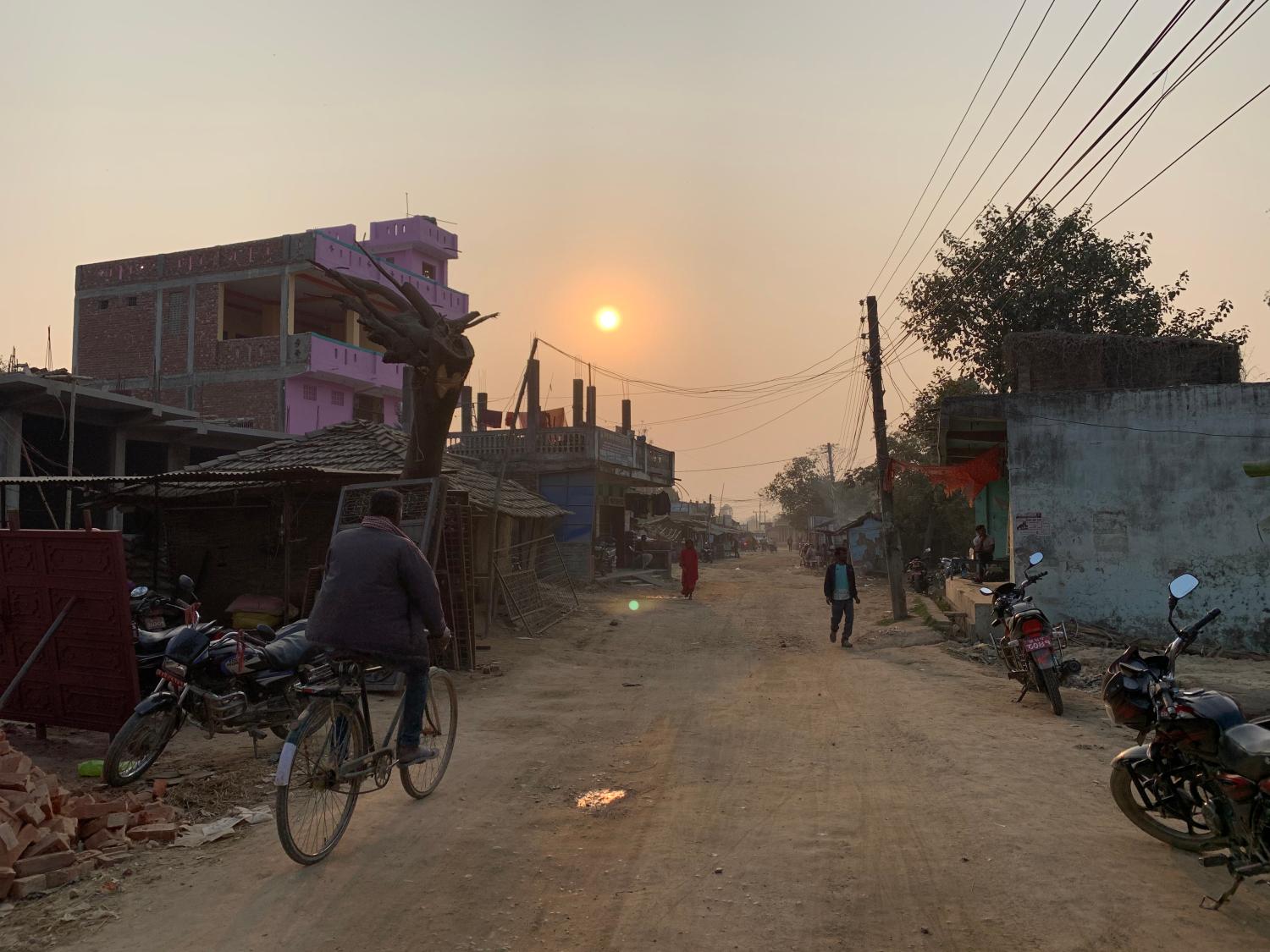
Hamsini: Do you think that the projects which are being carried out now are substantially different from what India used to carry out 10-15 years ago?
Riya: In terms of scale, yes! India’s capacity to deliver has improved from what it was doing ten-fifteen years ago. Indian waterways are the best-quoted example, as it has been in the pipeline since the 1980s but it is only now that we have National Waterway-1 and substantial development over the Ganga stretch. There have also been pilot projects and movement has taken place in recent years on a number of connectivity projects compared to ten years ago.
Hamsini: We speak about sub-regional initiatives such as BBIN, BIMSTEC, etc, do you think that in the future this is going to continue? Do you think these are going to play a big role, and how do you think their role in the region is changing? With SAARC, there was a move to revive it but it hasn’t materialised. How do you think the evolution of connectivity projects and sub-regional initiatives will take place?
Riya: The limitation with SAARC is that it will be held hostage given the Indo-Pak relations. There have to be lessons learned from SAARC, so that other regional or sub-regional organisations can work effectively. BIMSTEC has been increasingly promoted as a security organisation that can work against the wishes that the member states have for BIMSTEC; there is an increasing need to focus specifically on the functional areas of BIMSTEC as well as the bureaucratic capacity, so that it can deliver. Right now, the regional integration amongst (the BIMSTEC) countries is not very different from what it is in SAARC. We have to employ lessons from SAARC to BIMSTEC otherwise it will again be another regional organisation that is unable to deliver effectively and efficiently.
Hamsini: How do you think connectivity projects between India and Nepal, and widely within South Asia will evolve over the next couple of years? Do you think that there is a speeding-up on how much importance is given to them or will the status quo continue?
Riya: If you look at the joint statements between PM Modi and his counterparts in the South Asian region, connectivity has been recognised as a priority area. We have started delivering on a lot of connectivity projects, a lot of connectivity projects have been shaping up in the region because of Indian assistance. And third countries are also being involved, the key example being the Colombo port terminal being built by India and Japan. This kind of a new approach to connectivity projects as well as emphasising the need for it, is something that is going to continue for the next few years. Even within the government, there is an increasing push for ease of doing business within the region and there is a focus on mapping the time and cost of trade. This is something that’s going to continue and will work more fruitfully for the regional connectivity projects.
Hamsini: From your fieldwork and your research in the area do you have any policy recommendations specifically and widely for Indian connectivity projects?
Riya: There has to be a lot more coordination between both governments, better capacity building that India must engage in with the neighboring countries. It’s already doing it through the ITEC programs but there is much more that needs to be done, because at the ground level there have been persistent implementation gaps which enhances the need of capacity building of the beneficiary country, in terms of not just supporting in implementation of the project but sustaining the projects that have been completed. That’s the exercise that India must be focussing on for the next set of connectivity projects.
Hamsini: If someone is interested in relations between India and Nepal or in connectivity. Do you have any books or resources that you can recommend for them?
Riya: For South Asian connectivity, I would recommend, “A Glass Half Full” by Dr. Sanjay Kathuria from the World Bank, which is one of the most comprehensive reports on South Asian regional connectivity. Something that we’re doing in Brookings India, led by our fellow, Dr. Constantino Xavier, is a program called Sambandh: Regional Connectivity Initiative that maps connectivity between India and its neighbors on a set of varied hard and soft indicators. We have a set of 52 indicators that use data to assess where we currently stand in various sectors, such as trade, education connectivity, tourism, electricity, migration, aid, and official visits of the leaders of the region to other countries in the region. These are some of the analyses that we will be coming out within the next few months, which will help policymakers, researchers, and scholars prioritise the connectivity areas in terms of what’s working and what’s not working. We talk about neighborhood first, increasing connectivity within the region but do we know what the contours of the specific policies are, what are the limitations of these policies, which areas they are or aren’t working in? This is what the Sambandh Initiative addresses. For example, if the level of student connectivity is declining but the level of tourism is increasing then that is a good indicator and is something that India should focus on. We are trying to come up with a set of forty plus policy briefs as part of the initiative within the next few months.
With contribution from Umika Chanana, Intern, Foreign Policy and Security Studies.



Commentary
The road from India to Nepal: Development assistance and connectivity projects
April 15, 2020